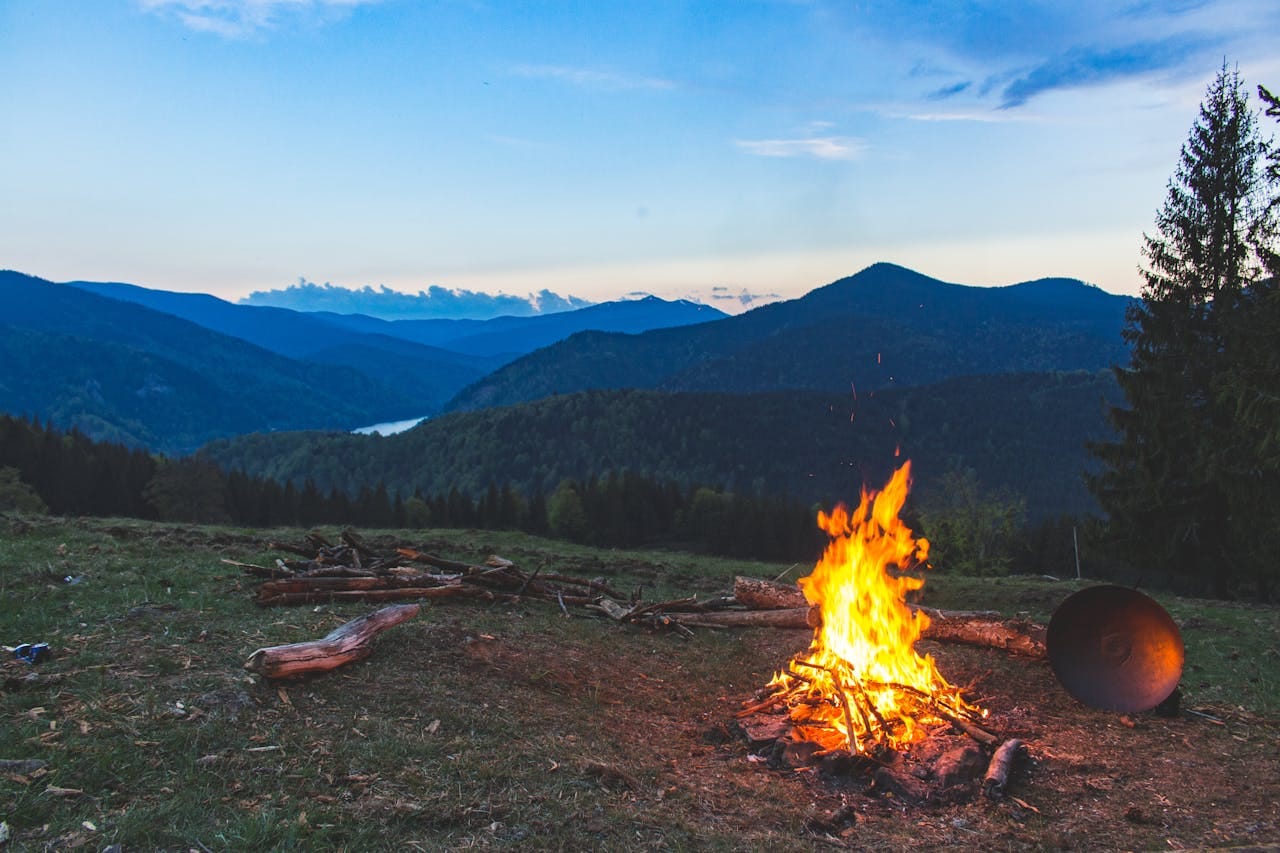Campfires are a timeless centerpiece of outdoor adventures, but building one requires knowledge and responsibility. Knowing how to construct and extinguish a fire safely ensures you’re protecting the environment, wildlife, and other campers while enjoying its warmth and glow. To build a campfire safely and responsibly, start by choosing a proper location, preparing the site, and following safety guidelines to minimize risks.
Step-by-Step Guide to Building a Campfire Safely
1. Choose the Right Location
The first step in building a safe campfire is selecting an appropriate spot. If you’re at a campground, use designated fire pits whenever possible. For backcountry campers, choose an area that is at least 15 feet away from tents, trees, or any flammable materials. Look for a flat, cleared space free of overhanging branches or dry grass.
Make sure to check local fire regulations before you start. Some areas have restrictions due to dry conditions, which can significantly increase the risk of wildfires.The National Park Service provides detailed guidelines on fire safety in various locations.
2. Prepare the Fire Site
Even if a fire pit is provided, it’s essential to ensure the surrounding area is clear of debris. If creating a fire site from scratch:
- Dig a small pit in the center of the cleared area.
- Circle it with rocks to contain the fire.
- Remove any nearby flammable materials, such as leaves or twigs.
3. Gather the Right Materials
To build an effective and safe campfire, you’ll need three types of materials:
- Tinder: Dry leaves, pine needles, or small twigs that ignite easily.
- Kindling: Small sticks or branches to feed the flames.
- Fuel wood: Larger logs that sustain the fire once it’s established.
Ensure all wood is dry and sourced responsibly. Avoid cutting live trees, as this harms the ecosystem and produces wet wood that doesn’t burn effectively.
4. Construct the Campfire
Building the fire properly minimizes the risk of stray sparks or uncontrolled flames. Popular methods include:
- Teepee Structure: Arrange tinder in the center and surround it with kindling in a cone shape. Place fuel wood around the kindling for a steady burn.
- Log Cabin Structure: Lay two larger logs parallel, stack smaller logs across them, and place tinder and kindling inside the frame.
Light the tinder using matches or a lighter, and gently blow on the flame to encourage it to spread to the kindling. Add fuel wood gradually, ensuring the fire remains controlled.
5. Practice Safe Campfire Behavior
- Never leave the fire unattended. Always have someone monitoring it.
- Keep a bucket of water, a shovel, or dirt nearby to extinguish flames quickly if needed.
- Avoid using accelerants like gasoline, which can cause uncontrollable flames.
- Maintain a manageable fire size to prevent it from spreading beyond the pit.
6. Extinguish the Fire Thoroughly
When you’re finished enjoying your campfire, extinguishing it properly is critical to preventing wildfires. Follow these steps:
- Allow the fire to burn down to ash.
- Pour water over the embers until they’re fully extinguished. Stir the ashes with a stick or shovel to expose hidden embers, and pour more water as needed.
- If water isn’t available, use dirt or sand to smother the fire completely.
Before leaving the site, check that the area is cool to the touch. According to the Smokey Bear Wildfire Prevention Program, most human-caused wildfires start from improperly extinguished campfires.
Responsible Campfire Practices
Campfires can have significant environmental impacts if not managed responsibly. Follow these additional tips to minimize your footprint:
- Use existing fire rings. Building new fire pits can damage the environment and disrupt local wildlife habitats.
- Pack out all trash. Burned trash releases toxic fumes and leaves harmful residues behind. Bring a trash bag and dispose of waste responsibly.
- Respect wildlife. Avoid leaving food or scraps in the fire pit, as this can attract animals to campsites, creating potential hazards.
Common Campfire Mistakes to Avoid
- Starting a fire during dry or windy conditions. High winds can spread embers, while dry conditions increase the risk of wildfires.
- Overloading the fire. Large fires are harder to control and extinguish. Stick to a smaller, manageable size.
- Leaving before fully extinguishing the fire. Even a small ember can reignite and cause a fire.
- Using non-biodegradable materials as fuel. Avoid burning plastics, cans, or treated wood.
Final Thoughts
Building a campfire safely and responsibly is an essential skill for outdoor enthusiasts. By following these steps, you can enjoy the warmth and ambiance of a fire while protecting the environment and reducing risks. Remember, safety always comes first—a well-prepared camper is a responsible camper. With organizations like the National Park Service and Smokey Bear emphasizing fire safety, there’s no shortage of resources to help you master these skills.
Whether you’re a seasoned adventurer or a first-time camper, these tips will ensure your campfire experience is both enjoyable and eco-friendly. So gather your materials, respect nature, and enjoy the timeless tradition of sitting around a crackling fire.

